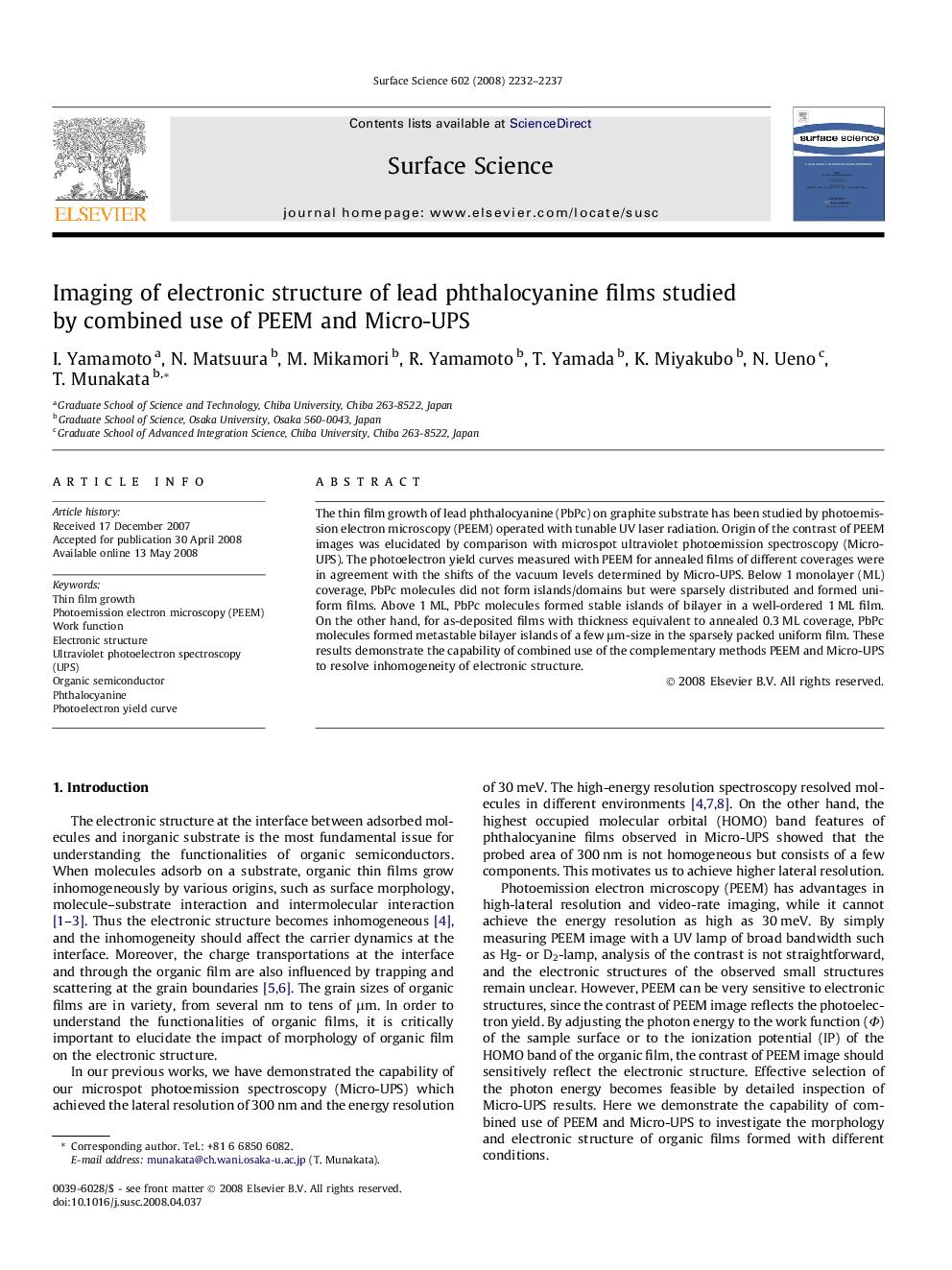| Article ID | Journal | Published Year | Pages | File Type |
|---|---|---|---|---|
| 5424546 | Surface Science | 2008 | 6 Pages |
Abstract
The thin film growth of lead phthalocyanine (PbPc) on graphite substrate has been studied by photoemission electron microscopy (PEEM) operated with tunable UV laser radiation. Origin of the contrast of PEEM images was elucidated by comparison with microspot ultraviolet photoemission spectroscopy (Micro-UPS). The photoelectron yield curves measured with PEEM for annealed films of different coverages were in agreement with the shifts of the vacuum levels determined by Micro-UPS. Below 1 monolayer (ML) coverage, PbPc molecules did not form islands/domains but were sparsely distributed and formed uniform films. Above 1 ML, PbPc molecules formed stable islands of bilayer in a well-ordered 1 ML film. On the other hand, for as-deposited films with thickness equivalent to annealed 0.3 ML coverage, PbPc molecules formed metastable bilayer islands of a few μm-size in the sparsely packed uniform film. These results demonstrate the capability of combined use of the complementary methods PEEM and Micro-UPS to resolve inhomogeneity of electronic structure.
Keywords
Related Topics
Physical Sciences and Engineering
Chemistry
Physical and Theoretical Chemistry
Authors
I. Yamamoto, N. Matsuura, M. Mikamori, R. Yamamoto, T. Yamada, K. Miyakubo, N. Ueno, T. Munakata,
